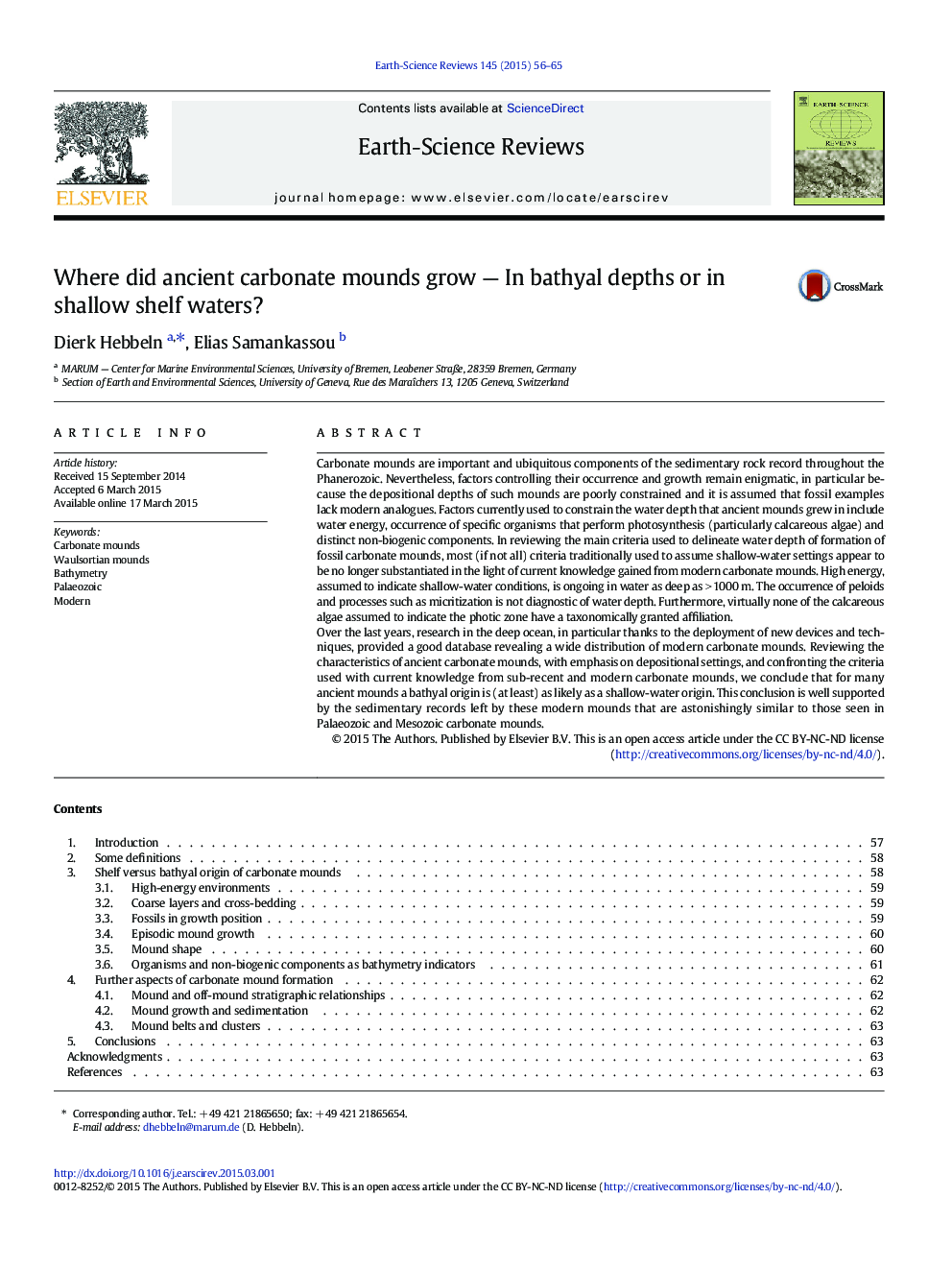| کد مقاله | کد نشریه | سال انتشار | مقاله انگلیسی | نسخه تمام متن |
|---|---|---|---|---|
| 6442964 | 1639957 | 2015 | 10 صفحه PDF | دانلود رایگان |
Carbonate mounds are important and ubiquitous components of the sedimentary rock record throughout the Phanerozoic. Nevertheless, factors controlling their occurrence and growth remain enigmatic, in particular because the depositional depths of such mounds are poorly constrained and it is assumed that fossil examples lack modern analogues. Factors currently used to constrain the water depth that ancient mounds grew in include water energy, occurrence of specific organisms that perform photosynthesis (particularly calcareous algae) and distinct non-biogenic components. In reviewing the main criteria used to delineate water depth of formation of fossil carbonate mounds, most (if not all) criteria traditionally used to assume shallow-water settings appear to be no longer substantiated in the light of current knowledge gained from modern carbonate mounds. High energy, assumed to indicate shallow-water conditions, is ongoing in water as deep as >Â 1000Â m. The occurrence of peloids and processes such as micritization is not diagnostic of water depth. Furthermore, virtually none of the calcareous algae assumed to indicate the photic zone have a taxonomically granted affiliation.Over the last years, research in the deep ocean, in particular thanks to the deployment of new devices and techniques, provided a good database revealing a wide distribution of modern carbonate mounds. Reviewing the characteristics of ancient carbonate mounds, with emphasis on depositional settings, and confronting the criteria used with current knowledge from sub-recent and modern carbonate mounds, we conclude that for many ancient mounds a bathyal origin is (at least) as likely as a shallow-water origin. This conclusion is well supported by the sedimentary records left by these modern mounds that are astonishingly similar to those seen in Palaeozoic and Mesozoic carbonate mounds.
Journal: Earth-Science Reviews - Volume 145, June 2015, Pages 56-65
